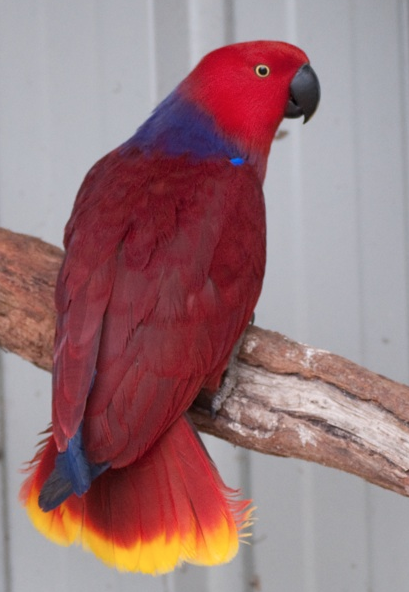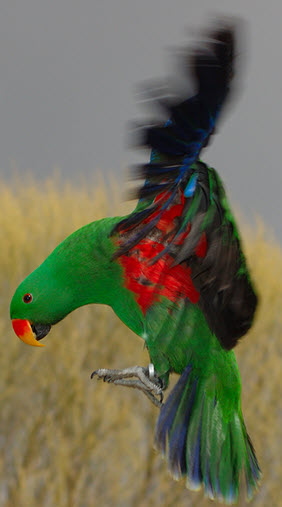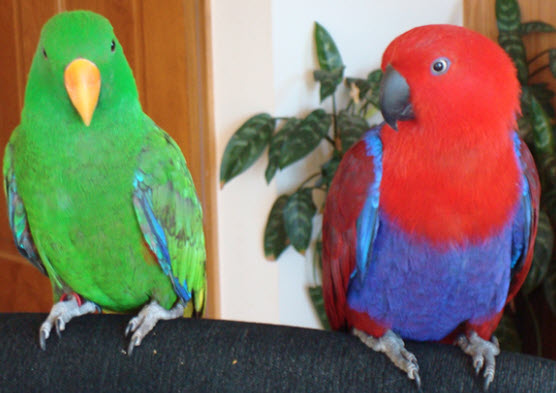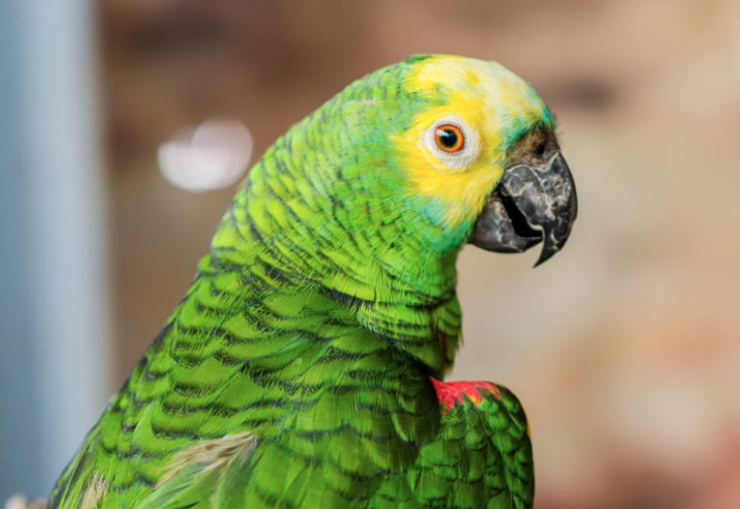Eclectus
Showing all 4 results
Grand Eclectus Parrot
The Eclectus is a native of Australia, Indonesia, Papua New Guinea, and/or the Solomon Islands. This species has also been introduced to Palau. Contrary to what the name suggests – the Grand Eclectus is actually smaller than most other Eclectus subspecies.
The Grand Eclectus is stocky in shape – similiar to the Solomon Eclectus – and has a narrower beak than the other eclectuses. The plumage is somewhat less vibrant than the one of the other eclectuses, and the tail is considerabl shorter and only narrowly tipped with lemon yellow.
The males are generally green with blue at the bend of the wing and red under the wing and sides of the body.
The female is generally red with dull-purple across the upper mantle, abdomen and lower breast. Her red feathers have a burnt or darkened quality and the tips of her tail feathers are often edged with yellow orange. The vent area is orange.
Solomon Eclectus
Male Solomon Eclectus Parrots have yellow-tinted green feathering over the majority of their bodies. Their primary wing-coverts and primary flight feathers are a dark blue color, edged in green. The upper side of the Solomon Eclectus male’s tail is green. The underside of the tail is black, edged with a thin band of pale yellow stretching for about ten millimeters. The iris is a reddish orange color.
Female Solomon Eclectus Parrots have stunning red plumage with dark blue under-wing coverts. They also have a band running to the nape that is dark blue. Females have dark blue, green-edged primary coverts and primary flight feathers like the male, as well. Their irises are a light yellow-white color. Unlike the hens of other eclectus sub-species, the Solomon female has no visible yellow or orange coloration – only red and blue, with some undercolors of green which are not normally visible.
Yellow Head Amazon
The Yellow-head Amazon parrots are known for their playful antics and excellent talking abilities. This being said, talking ability will vary between birds and even though many of them are excellent talkers, some may never learn to talk. They are handsome and generally affectionate. Their friendly and playful nature make them excellent pets.
They are easily tamed and trained and are known to be very active – which makes them more suitable to an environment that allows them to fly and move around, such as an aviary or flight. Provided they are given sufficient daily exercise, they can adjust to indoor cages and indoor living as well.
They are known for their loud voices, which is said to be the loudest of all Amazon Parrots. People who are not tolerant to noise, will not do well with this parrot.
Like most larger parrots they can also be very destructive and their need to “customize their environment” needs to be redirected by providing them plenty of chewing toys and branches.
Their longevity should also be a consideration. These parrots can live to the old, ripe age of 60 to 80 years



